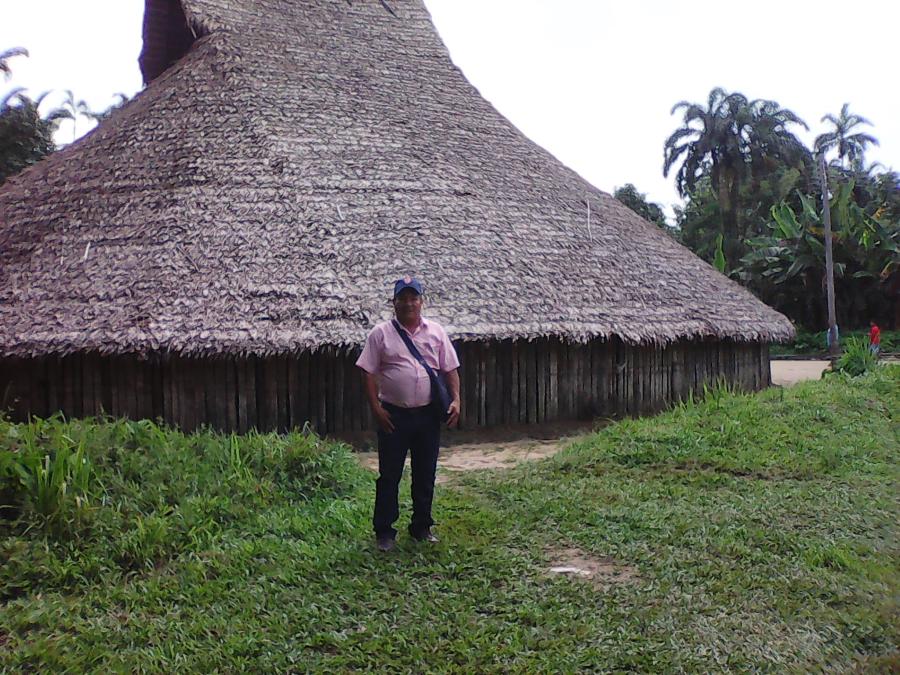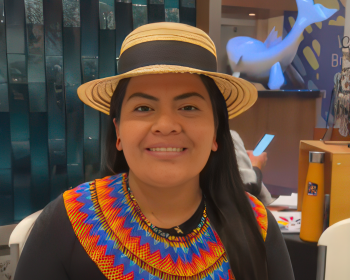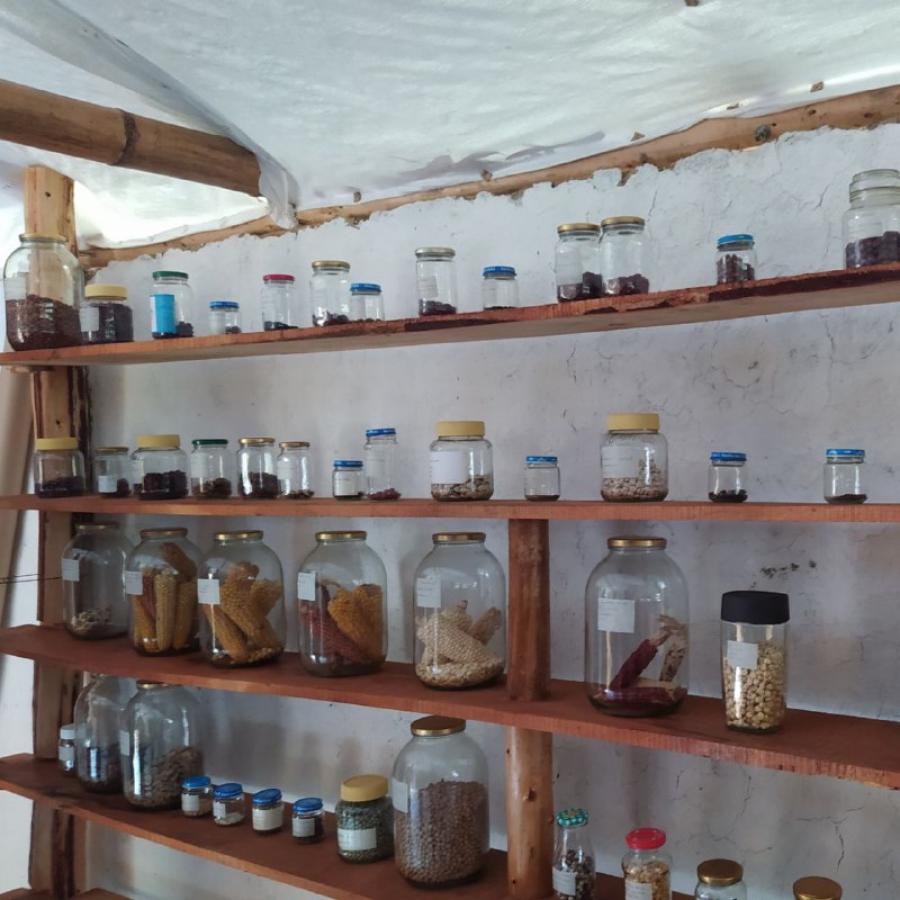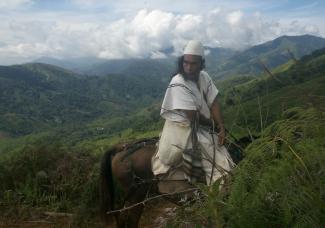
Seyaru’kwingumu is Co-director and Co-founder of Ofrenda A’bunna. He is helping to lead his Arhuaco community, Seykún, toward their goal to be a model of Indigenous-led conservation that can be replicated in other places. Seykún is located in the Sierra Nevada de Santa Marta of northeast Colombia, a small, isolated mountain range on the northern tip of South America. Because of its location and extreme variation in elevation, it contains almost every ecosystem found in tropical America. The journal Science calls this area “the most irreplaceable site in the world for threatened species.” This is also Arhuaco ancestral territory. Seyaru’kwingumu has observed that recuperating and regenerating this land protects animal populations, which have declined a striking 70 percent globally since 1970. It has also been shown that forests can provide 30 percent of the solution to keeping global warming below 2°C.
Ofrenda A’bunna is an Indigenous-led nonprofit founded in 2016 to recuperate and regenerate ancestral land in Seykún. The community has already protected 8,000 acres, and their goal is to purchase and protect an additional 5,000 acres of Arhuaco ancestral territory in the next five years. Joshua Dautoff co-created Ofrenda A’bunna with the Arhuaco community members of Seykún to support their multi-generational struggle to recuperate and regenerate ancestral territory. As Co-director and a trained journalist, he plays a bridge-building role to share Seykún’s story with a larger audience. Miriam Anne Frank is an applied anthropologist and independent consultant supporting Indigenous Peoples for over three decades. Dautoff and Frank recently spoke with Seyaru’kwingumu.
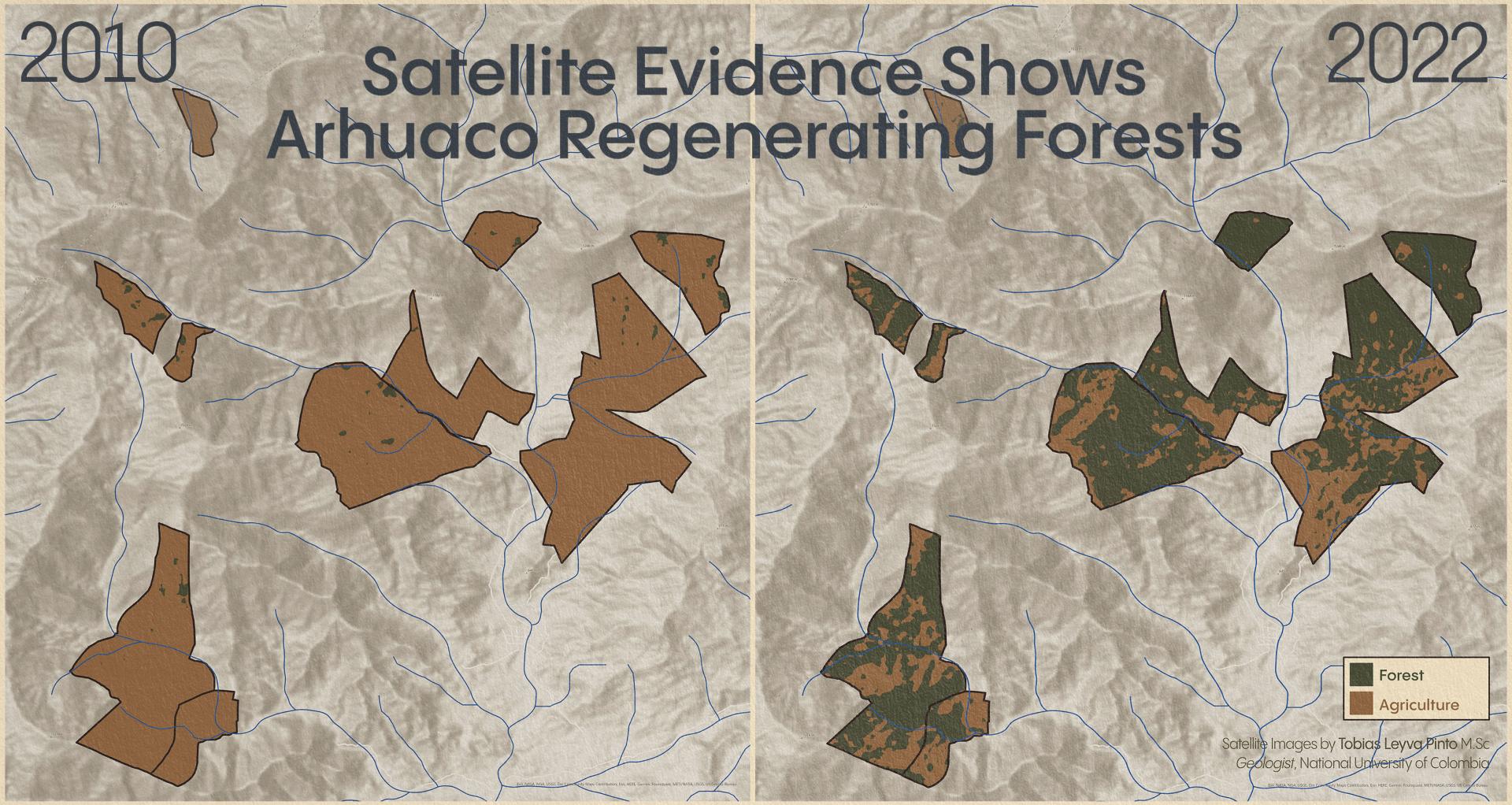
Forest cover on Arhuaco ancestral land expanded 63 percent in 12 years.
How is Ofrenda A’bunna implementing an Indigenous-led model of conservation?
Seyaru’kwingumu: Ofrenda A’bunna means “offering to creation.” We are recuperating Arhuaco ancestral territory in Colombia’s Sierra Nevada de Santa Marta. We work in the community of Seykún, where we are purchasing land to rewild over 70 percent of it and use the remainder to organically grow food for our community. All of the purchased land is collectively owned and protected by the 450 members of our community.
Most conservation models are born out of a desire to protect nature from humans. We believe that in order to protect our planet, we must protect the cultures that have developed respectful relationships with Mother Earth. Our approach to conservation does not isolate nature from humans. We see ourselves as one more member of the community of life that calls our ancestral territory home. We do not believe in a hierarchy where humans have a superior role. On the contrary, humans depend on our Mother, the water, the stones and the trees; they do not depend on us. Because of this, we have a conservation model in which we live on the land that we are protecting. We do not pay park rangers or build fences. Instead, we make offerings and live in respectful relationships with our ancestral territory. We do this because we know that our own health depends on hers.
Ofrenda A’bunna is organized in a similar way as the rest of the Arhuaco culture. Our spiritual leaders are always consulted and guide our work. Decision-making is then done through community consensus. We have also created an all-indigenous board of directors along with other mechanisms that the government requires and that help us interface with the non-Indigenous world. But the spirit of our work is organized in line with Arhuaco culture.
What is the role of Traditional Knowledge and your relationship with your ecosystem?
Seyaru’kwingumu: In Arhuaco culture, the land is measured in more than acres or hectares. We see our territory more like a bible or a constitution, where the wisdom of how to organize our lives is written. Each parcel of ancestral territory that we purchase and protect is equivalent to recuperating a page of this sacred text. The mamos, our spiritual leaders, are trained to interpret the information codified in the stones, clouds, trees, and bird songs and communicate this information to the rest of the community. We then grow our crops, educate our children, and live in relationship with one another based on these teachings.
The women in our community have the power to create life. This, of course, is expressed in pregnancy and the birth of our children, but it is also fundamental in the continuity of our culture through their wisdom teachings offered to the younger generation. We talk about recuperation and regeneration of the land. For us, the land is female. The land that we purchase often has a history of abuse by its previous owners. But when the land is respected and given time, it will grow new plants. The animals and water will return. This is the female energy of birth and regeneration. For us, this is not a metaphor. The women bring this power forth through the clarity in their thoughts. They weave traditional bags throughout the day to maintain harmony and balance in their thinking. The men use the poporo (ceremonial gourd) for the same reason. These practices help create the serenity needed to heal our territory and live in peace.
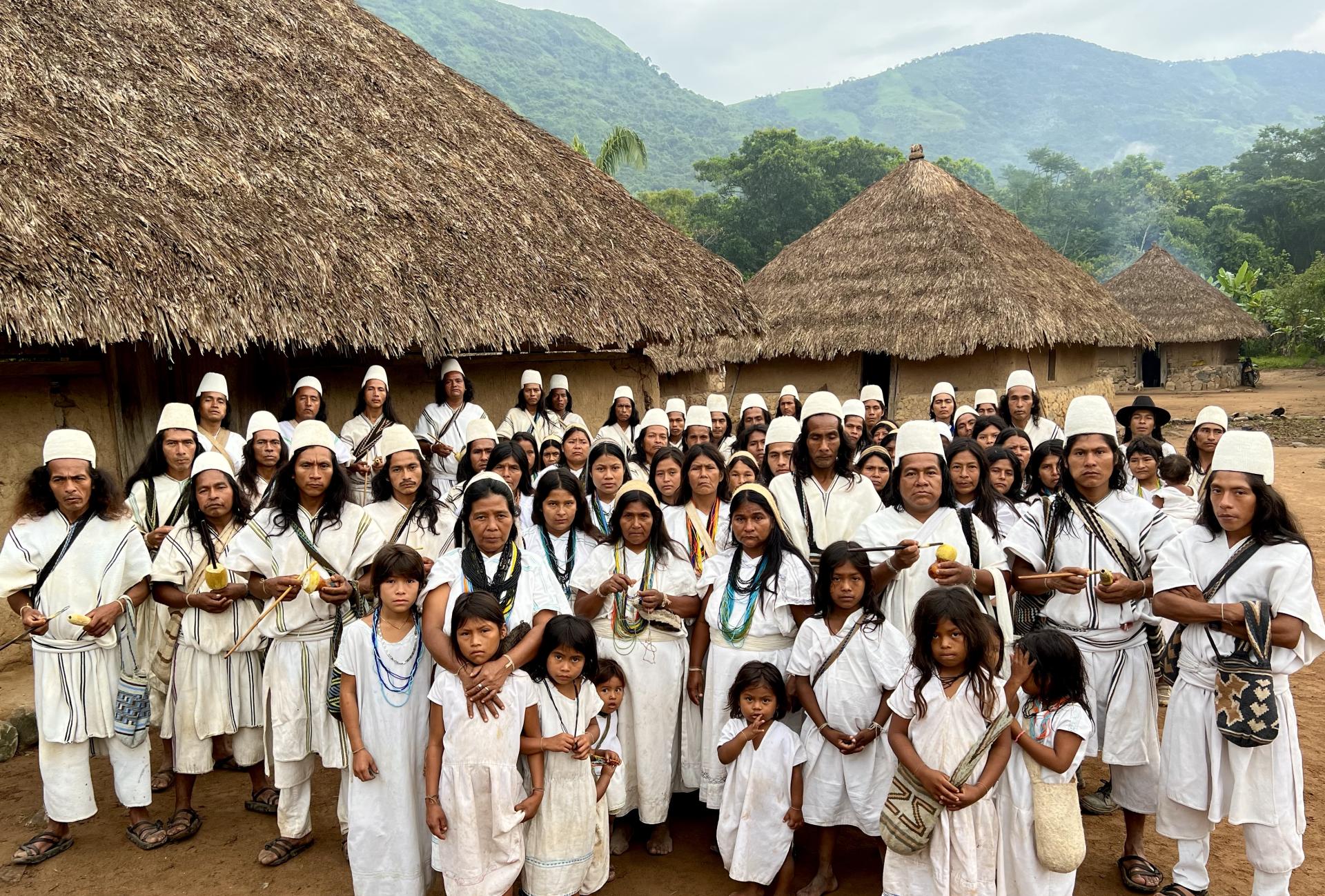
Seykún community members. Photo by Joshua Dautoff.
Why did you choose to buy your land back rather than try to reclaim your ancestral territories through the legal system?
Seyaru’kwingumu: We are a people who want to respect all of nature, including human beings. Even though we consider Colombia’s Sierra Nevada de Santa Marta to be our ancestral territory, we also recognize that there are campesinos here that have legal rights to the land. If we believe we should respect the stones and water, then we also must respect our campesino neighbors. This means we will not push them off the land by force or through the legal system. Our spiritual leaders have taught us that the campesinos will exchange their land for money. This is why Ofrenda A’bunna is trying to raise money. It is not for us. These funds go to campesinos so they will peacefully go to another place and allow us to protect our ancestral territory.
What successes have you had?
Seyaru’kwingumu: In our Arhuaco community of Seykún, we have already recuperated over 8,000 acres. A geologist
from Colombia’s National University studied the impact of our work. Using satellite images, he compared 2,500 acres
of land we purchased in 2010 to images of the same land in 2022. He determined that there has been a 63 percent
increase in forest cover during this period. As the land regenerates, the water returns, the animals return, our atmosphere heals, and our culture strengthens.
What do you still need to achieve your goals?
Seyaru’kwingumu: Our goal is to purchase and protect 5,000 more acres in the next 5 years. We want to be a model of Indigenous-led conservation that can be replicated in other communities. Many people talk about the many difficulties happening in our world. But we want to communicate that there are positive things to do, and invite those who feel called to support our work to join us and help heal our Mother Earth.
To learn more about Ofrenda A’bunna, visit: www.ofrendaabunna.org.
Top photo: Seyaru’kwingumu in the mountains surrounding his community of Seykún, Sierra Nevada de Santa Marta, Colombia. Photo by Joshua Dautoff.
